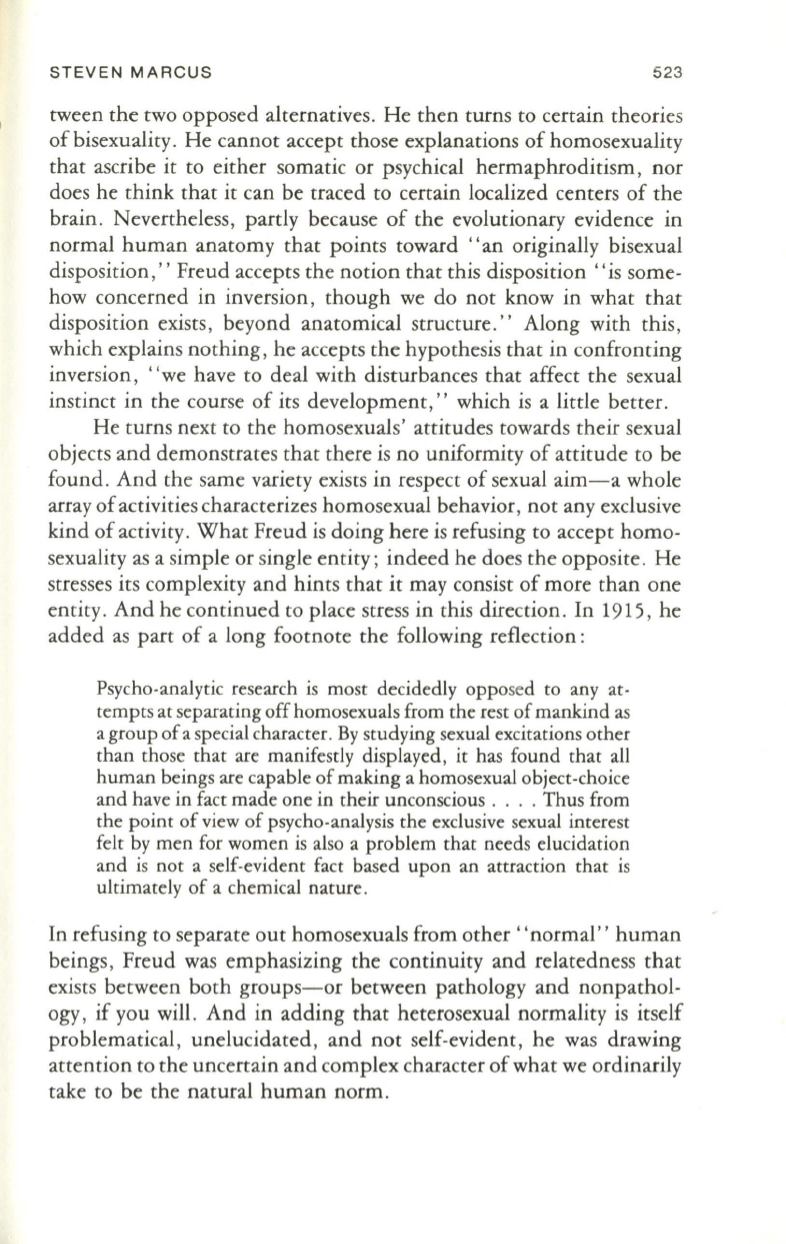
STEVEN MARCUS
523
tween the two opposed alternatives. He then turns to certain theories
of bisexuality. He cannot accept those explanations of homosexuality
that ascribe it to either somatic or psychical hermaphroditism, nor
does he think that it can be traced to certain localized centers of the
brain. Nevertheless, partly because of the evolutionary evidence in
normal human anatomy that points toward "an originally bisexual
disposition ," Freud accepts the notion that this disposition "is some–
how concerned in inversion, though we do not know in what that
disposition exists, beyond anatomical structure. " Along with this ,
which explains nothing, he accepts the hypothesis that in confronting
inversion, " we have to deal with disrurbances that affect the sexual
instinct in the course of its development," which is a little better.
He turns next to the homosexuals' attitudes towards their sexual
objects and demonstrates that there is no uniformity of attitude to be
found. And the same variety exists in respect of sexual aim-a whole
array of activities characterizes homosexual behavior, not any exclusive
kind of activity. What Freud is doing here is refusing to accept homo–
sexuality as a simple or single entity; indeed he does the opposite. He
stresses its complexity and hints that it may consist of more than one
entity . And he continued to place stress in this direction. In 1915, he
added as part of a long footnote the following reflection:
Psycho-analytic research is most decidedly opposed to any at–
tempts at separating off homosexuals from the rest of mankind as
a group of a special character. By studying sexual excitations other
than those that are manifestly displayed, it has found that all
human beings are capable of making a homosexual object-choice
and have in fact made one in their unconscious . . .. Thus from
the point of view of psycho-analysis the exclusive sexual interest
felt by men for women is also a problem that needs elucidation
and is not a self-evident fact based upon an attraction that is
ultimately of a chemical nature .
In refusing to separate out homosexuals from other' 'normal" human
beings , Freud was emphasizing the continuity and relatedness that
exists between both groups-or between pathology and nonpathol–
ogy, if you will. And in adding that heterosexual normality is itself
problematical, unelucidated, and not self-evident, he was drawing
attention to the uncertain and complex character of what we ordinarily
take to be the natural human norm.


